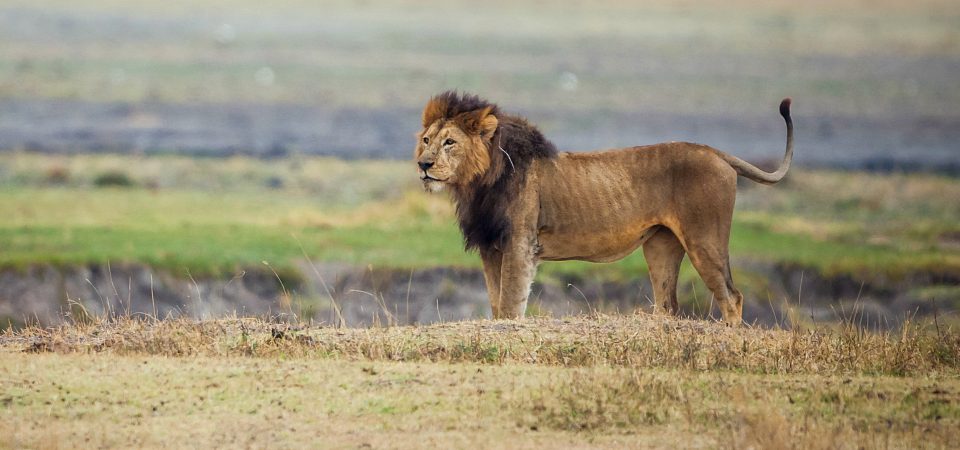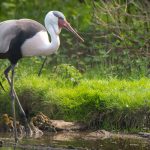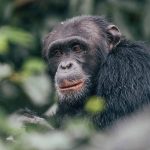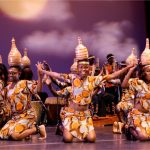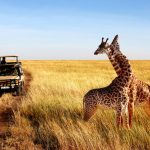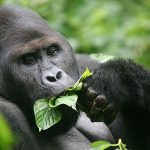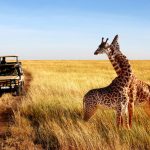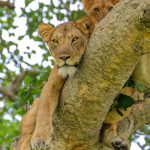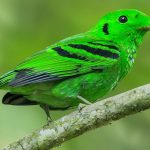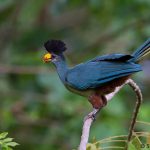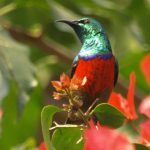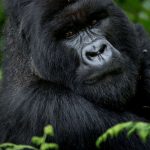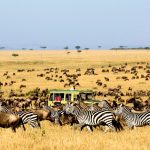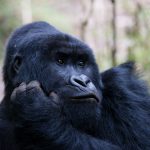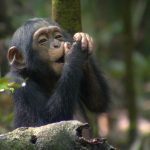ACCESS TO NGORONGORO SAFARI
The Ngorongoro crater and wider conservation area are easily accessible. There is a daily light aircraft flight to Arusha from Dar (other airstrips in Tanzania also fly to Arusha) where you would then be met by a safari guide in a closed-sided pop-top 4 x 4 safari vehicle. Your guide will stay with you for your time down in the Crater, and possibly longer. The drive from Arusha is around 4 hours to begin a Ngorongoro Crater safari.
Another alternative is to fly to Manyara airstrip, which is about an hour from the Crater. Depending on where you’re staying – you may be met by the lodge, or picked up by a private driver guide.
Due to the high levels of traffic, park fees have significantly increased over the past few years, (from US$10 per vehicle in 2006 to US$295 per vehicle at a time of writing (June 2017)). There is also a fee of US$70.10 per person for entrance to anywhere in the Ngorongoro Conservation Area. These fees are usually included in our prices. There are further constraints on the timing of visits, with guests restricted to a maximum of 6 hours between 0700 and 1800. If you’re considering a Ngorongoro Crater safari, then feel free to talk to one of our specialists and we can help you get the best experience possible.
WHERE TO STAY
There is no accommodation within the Ngorongoro Crater and so generally speaking there are two different options; either staying on the Crater rim or on the Rift Valley Escarpment. There is a collection of lodges perched on the Crater rim overlooking the floor. These lodges tend to have incredible views and easy access to the crater, however, the prices reflect this. The Ngorongoro Crater Lodge is the most luxurious option but it is also the most expensive. The other Lodges that have views of the Crater floor are the: Ngorongoro Serena Safari Lodge; Ngorongoro Wildlife Lodge; and the Ngorongoro Sopa Lodge. These lodges are much larger and also benefit from an exceptional view, however, their size means they’re lacking in the character you can find elsewhere. There are a handful of other lodges and camps in the hills of the Crater, which do not have the views but are still extremely convenient and are also more affordable, an example of this is the Rhino Lodge.
Alternatively, you could choose to stay on the nearby Rift Valley Escarpment in an area often referred to as Karatu. The lodges and camps here are all less than about 20km from the Crater and have a lot more character than the aforementioned lodges. Gibb’s Farm, Plantation Lodge and the Ngorongoro Farmhouse Lodge are all true of this.
NGORONGORO WILDLIFE SAFARI
Due to the enclosed nature of the Crater, it has virtually formed its own ecosystem. Besides the stunning scenery, one of the main attractions of this area is the variety of flora and fauna found in a remarkably compact area all year round. In the South West corner, there is the Lerai Forest, which is mainly comprised of yellow fever trees (a member of the acacia family). To the north of the forest is a shallow soda lake called Lake Magadi and to the east, you will find Gorigor Swamp and the Ngoitokitok Springs where pods of hippo are to be found. The north of the Crater is, on the whole, much drier and consists of the open grasslands which characterise the Crater floor; this is where the majority of the resident game resides.
You are guaranteed to see large concentrations of game on any Ngorongoro safari. The mineral-rich floor of this spectacular bowl is largely flat, open and covered in nutritious grasses – much to the liking of large herds of zebra and wildebeest, which graze here. These extensive open plains are also home to herds of buffalo, Thomson’s gazelle, Grant’s gazelle and tsessebe (often called topi). You’ll also find East Africa’s best population of black rhino here, which are often seen in open grasslands. Breeding herds of elephant pass through the Ngorongoro Crater itself only rarely, but you will see a scattering of old bulls, including some of the biggest tuskers left alive in Africa today. The only surprising absentees from the Crater are Impala and Giraffe; it is thought that this is perhaps because of the lack of open woodlands and browsing species of trees which these two tend to thrive on.
The high numbers of herbivores support the densest populations of predators found anywhere in Africa. The reliable presence of these predators has helped to make a Ngorongoro safari so popular. The Crater’s lion population varies significantly over time, the one constant being their complete disregard of vehicles; they will hunt within yards of a vehicle, and when exhausted even seek shade beside them. Spotted hyenas are even more common here, often competing with the lion, and there’s are a small but growing number of cheetahs, Leopards are around, especially in the vicinity of the Lerai Forest. Side-striped and the lovely golden jackal are often seen skulking around, whilst bat-eared foxes are a rarer sight.
Having waxed lyrical about the Ngorongoro Crater’s wildlife, the reality of safaris there isn’t always as amazing. The sheer number of vehicles in the crater, combined with its open environment, can destroy any sense of wilderness. It can feel crowded and busy. Often, this will be mitigated by amazing game sightings, but not always. So whilst the Ngorongoro’s wildlife is stupendous, the Ngorongoro Crater safari experience isn’t always as good as you might imagine.


